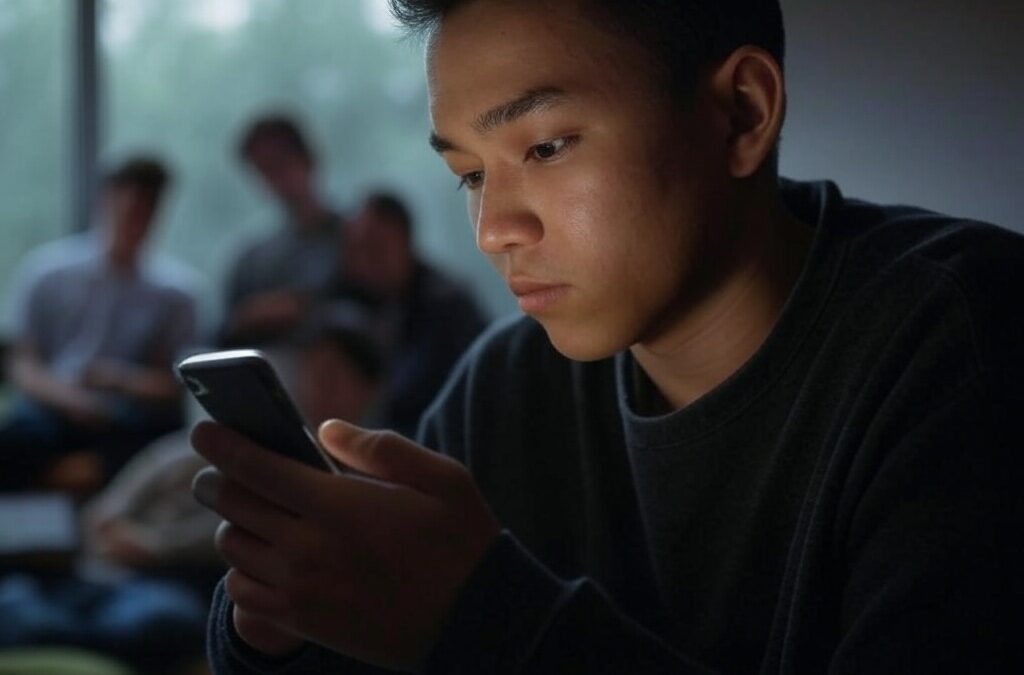Have you ever had a gut feeling about something that turned out to be right? Maybe you’ve thought about a friend just before they called or decided to take a different route home and avoided a traffic jam. These are examples of intuition – those seemingly magical moments when you just know something without really knowing how. Intuition is a fascinating part of our thinking process, often guiding us in ways logic can’t explain. It’s like having a built-in GPS that sometimes points us in the right direction without us even realizing it.
Intuition isn’t just random guesswork; it can be a powerful tool in decision-making and problem-solving. Many people rely on it daily, sometimes without even realizing it. Scientists and psychologists have studied intuition to understand how it works and why it can be so effective. They’ve found that intuition can be incredibly accurate, especially when it comes from a place of experience and knowledge. In this article, we’ll explore 20 real-life examples of intuition at work, helping you recognize and perhaps even trust your own intuitive moments more.
What is Intuition?
Intuition is the ability to understand or know something immediately, without the need for conscious reasoning. Often described as a “gut feeling” or an instinctive understanding, intuition allows individuals to make decisions quickly and efficiently by relying on their subconscious mind. It involves recognizing patterns or information that may not be readily apparent through logical analysis. Intuition draws upon personal experiences, emotions, and stored knowledge, enabling people to make judgments without deliberate analytical thought. This cognitive process is crucial in various aspects of life, including problem-solving, decision-making, and creativity. Intuition is not only a mysterious sixth sense but also a critical component of human cognition that integrates both emotional and intellectual insights to guide actions and beliefs.
The Best Examples of Intuition
Intuition shows up in countless forms, often guiding people to choices they can’t fully explain but feel certain about. The following examples reveal how intuition operates in real-life situations, highlighting its surprising accuracy and influence in our lives.
1. A Parent’s Instinct
A mother might sense that something is wrong with her child, even when everything seems fine on the surface. This feeling can prompt her to check on her child, only to find out they are coming down with a fever. This example shows how intuition often relies on subtle cues that the conscious mind may not immediately recognize.
2. A Chess Player’s Move
Experienced chess players often make moves without calculating every possible outcome. They rely on intuition formed from years of practice. They see a pattern or recognize a formation, knowing instinctively that it’s the right move. This highlights how intuition is built on deep knowledge and experience.
3. A Gut Feeling in Business
An entrepreneur might feel that a particular business deal isn’t right, despite the numbers looking good. Later, this decision proves beneficial as issues with the deal emerge. Intuition here acts as an internal guide, steering decisions beyond what is apparent or logical.
4. An Artist’s Inspiration
Artists sometimes create works that seem to flow effortlessly, guided by a sense of rightness about color or form. This intuition is less about logic and more about a deep connection to their craft. It allows them to express ideas and emotions that are difficult to articulate.
5. A Doctor’s Diagnosis
A seasoned doctor might diagnose a patient correctly based on a hunch, even when initial tests don’t confirm it. Their intuition is honed by years of observing symptoms and patient interactions, which helps them sense what might not be immediately obvious.
6. An Athlete’s Split-Second Decision
In sports, players often have to make split-second decisions. An athlete might pass the ball to a teammate without consciously deliberating, simply feeling it’s the right choice. This is intuition in action, shaped by countless hours of practice and play.
7. A Writer’s Plot Twist
A novelist might suddenly know the perfect plot twist for their story without planning it in advance. This intuitive leap can bring new depth and excitement to their narrative. It shows how creativity and intuition often go hand-in-hand.
8. A Hiker’s Sense of Direction
While hiking, a person might feel a strong urge to take a particular path, even if it’s not the obvious route. This intuitive direction can lead them to a beautiful view or a safe passage. It’s an inner compass guiding them when maps and signs aren’t available.
9. A Teacher’s Understanding
A teacher may sense that a student is struggling, even if they haven’t spoken up. They might feel an intuition to offer help or ask questions that reveal underlying issues. This sensitivity can make a significant difference in a student’s learning experience.
10. A Friend’s Concern
You might feel a sudden concern for a friend, prompting you to reach out, only to discover they needed support at that moment. Intuition here can strengthen relationships, showing care and understanding beyond what is communicated verbally.
11. A Shopper’s Choice
A person shopping for a gift might be drawn to one particular item without really knowing why. They feel a connection to it and just “know” it’s the perfect fit for the recipient. Later, the gift turns out to hold special meaning for the person receiving it. This is a small but powerful example of intuition guiding people to make personal, thoughtful decisions.
12. A Traveler’s Safety Instinct
A solo traveler might feel uneasy in a specific area, even if nothing seems wrong. This feeling urges them to change course or stay in a busier location. Only afterward do they learn that the area has a high rate of pickpocketing or other dangers. Here, intuition serves as a subtle but effective form of self-protection, urging caution in unfamiliar places.
13. A Job Seeker’s Choice
When choosing between two job offers, a candidate may feel an unexplainable pull toward one position over the other, even though both appear equally promising on paper. Later, they find out that the culture at their chosen workplace aligns better with their values and personality. This shows intuition at work, guiding people toward environments where they’ll thrive.
14. A Chef’s Ingredient Choice
In the kitchen, a chef might suddenly decide to add a pinch of an unusual spice or ingredient, sensing it will elevate the dish. This choice isn’t based on a recipe but rather on intuition honed by years of tasting and experimenting with flavors. The result is a unique and memorable dish, a product of intuitive creativity in the culinary world.
15. An Interviewer’s Instinct
During an interview, a hiring manager might sense that a candidate is holding back or uncomfortable about a certain topic. They may decide to ask a gentle follow-up question that allows the candidate to open up. This subtle intuition enables a more genuine connection and often reveals deeper insights into the candidate’s potential.
16. A First Responder’s Judgment
A paramedic arriving at an accident scene may prioritize a patient who seems stable but feels there’s more going on. Acting on this hunch, they quickly realize the patient has internal injuries that need immediate attention. This example highlights how intuition, especially in high-stakes situations, can be life-saving and invaluable.
17. A Dancer’s Flow
In a dance performance, a dancer might feel compelled to adjust their timing or expression, even if it deviates from choreography. This instinctual move brings authenticity to their performance and resonates deeply with the audience. Their intuition transforms the dance into a genuine, moving experience beyond the steps.
18. A Therapist’s Insight
A therapist working with a client may suddenly sense that a particular line of questioning will lead to an emotional breakthrough, even if it wasn’t part of their initial plan. Following this instinct, they uncover core issues that the client hadn’t previously expressed. This type of intuition is deeply empathetic and helps build trust and understanding in a therapeutic setting.
19. A Child’s Play Decision
Young children often display intuitive behavior. For example, a child might feel comfortable with one particular adult or peer, even if they’re just meeting them for the first time. This intuitive sense of safety or discomfort often serves as a simple, protective mechanism, even before they fully understand why.
20. A Stock Trader’s Move
A seasoned stock trader may feel an urge to buy or sell a stock, even if all the indicators suggest holding steady. Later, market events confirm that their choice was right, avoiding loss or capturing profit. Their intuition here is built over years of observing market trends, an internal guide that often operates faster than logical analysis.
Additional unique examples of intuition:
- A pet owner’s sense that their animal needs medical attention.
- A driver’s instinct to change lanes just before traffic slows.
- A musician’s feeling to improvise a specific note or rhythm.
- A real estate agent’s hunch about a property’s true value.
- A volunteer’s feeling to approach someone in need of help.
- A student’s instinct to focus on a particular topic before an exam.
- A leader’s sense that their team needs motivation or support.
- A gardener’s intuition to plant at just the right time.
- A counselor’s sense that a client is withholding emotions.
- A negotiator’s hunch to change tactics mid-discussion.
Should You Always Trust Intuition?
The short answer? Not always. While intuition can be a powerful tool, it isn’t flawless. Like any skill, it’s shaped by experience, knowledge, and sometimes, bias. Trusting intuition blindly can lead to snap judgments that might not be the best choice. However, ignoring it altogether can mean missing valuable insights. So, the key lies in finding a balance.
In many situations, intuition is like a first alert system. It helps us notice things quickly when there’s no time to think through every detail. For instance, if you feel uneasy in a certain place, it might be wise to trust that instinct and leave. Often, these feelings are based on subtle cues we pick up unconsciously – tones, body language, or environmental factors.
On the flip side, intuition can also be influenced by fears, biases, or past traumas. Sometimes, what feels like an instinct is just an assumption we’re making based on personal experiences or cultural conditioning. For instance, if you have a negative experience with one person, you might intuitively distrust someone similar in the future. Here, intuition isn’t necessarily giving you reliable guidance but reflecting personal biases instead.
For big, life-changing decisions, it can be helpful to double-check your intuition with logic. Take a moment to ask yourself if the feeling is rooted in genuine insight or if it might be influenced by past experiences or emotions. Consulting others, gathering information, or even writing down your thoughts can help clarify whether your intuition is truly pointing you in the right direction.
Intuition is often strongest when it’s informed by experience. A doctor, for instance, might have an intuitive feeling about a patient’s condition that proves accurate due to years of training and observation. However, for someone without experience in a particular field, trusting intuition alone may not yield the best results. The more experience and knowledge you have, the more reliable your intuition becomes.
So, should you always trust your intuition? Trust it, but also question it. Think of it as one voice among many in your decision-making process. Listen, but don’t let it make the final call unless you’ve weighed it against logic and facts. Intuition can be wise, but it’s not infallible. It’s about learning when to lean on it and when to balance it with a more careful look.
The Science Behind Intuition: Understanding the Gut Feeling
Intuition is often described as a gut feeling or an instinct that guides decision-making without conscious reasoning. Scientifically, intuition is linked to the brain’s ability to quickly process information and draw from past experiences. Our brains are wired to recognize patterns and make connections that aren’t always immediately apparent to our conscious mind. This is why sometimes, without knowing exactly why, we feel certain about a decision or direction.
Neurologically, the brain stores vast amounts of information from our experiences, which are then used to make snap judgments. This process is facilitated by the brain’s neural networks that operate beneath the level of conscious awareness. Studies show that the right hemisphere of the brain, which is associated with creativity and holistic thought, plays a crucial role in intuitive thinking. It’s fascinating to note that intuition can be honed over time, particularly in fields where quick decision-making is essential, such as in emergency medicine or high-stakes business environments.
Moreover, the role of the subconscious is pivotal in intuition. It acts like a vast storage room, where countless memories, experiences, and knowledge are kept. When faced with a decision, the subconscious can retrieve relevant information quicker than the conscious mind, leading to that instant gut feeling.
Can We Enhance Intuition?
While intuition is a natural cognitive function, it can be cultivated and enhanced through specific practices. One of the most effective ways to develop intuition is by engaging in mindfulness and meditation. These practices help to quiet the mind, reducing the noise of everyday thoughts and allowing intuitive insights to emerge. As you become more attuned to your inner thoughts and feelings, you can better recognize intuitive signals.
Another useful practice is journaling. By writing down thoughts, feelings, and experiences, you create a record that can help reveal patterns or intuitive insights that might not be obvious at first glance. This self-reflection also helps to build trust in your own intuitive abilities.
Additionally, it’s important to pay attention to your emotional responses and physical sensations. Intuition often communicates through the body, such as a feeling of unease or excitement when considering a decision. By being aware of these signals, you can learn to interpret and trust them as part of your decision-making process.
Lastly, spending time in nature can also enhance intuition. Nature provides a calm and quiet environment that encourages introspection and a deeper connection to one’s inner self. This connection can strengthen intuitive insights and help you make more informed choices. By incorporating these practices into your daily routine, you can enhance your intuition and harness this powerful tool for personal and professional growth.
Intuition in Decision-Making: Trusting Your Inner Voice
When it comes to making decisions, intuition can feel like a silent partner. It’s that inner pull or gut feeling steering you one way or another, sometimes before you fully know why. For some, intuition is just a hunch, but for others, it’s a valuable tool shaped by past experiences and deep knowledge. So, should you rely on intuition to make decisions? Let’s explore how intuition works and how to balance it with logical thinking.
For many people, intuition simplifies choices. Instead of overthinking, they trust their instincts to guide them. This doesn’t mean intuition ignores reason – it often combines what we know and feel, drawing on subtle clues that may not be obvious. For instance, you might feel drawn to a particular job without fully knowing why. Over time, that job may prove to be a perfect fit. Intuition can act as a quiet compass, especially in complex situations.
Many successful leaders use intuition to make quick calls. They trust it because, after years of experience, it often aligns with their judgment. In high-stakes decisions, intuition can offer speed and clarity when there’s no time to evaluate every detail. It’s like an experienced advisor, helping you read between the lines and assess situations quickly. However, even leaders balance intuition with facts, using both to make sound decisions.
Everyday choices also bring out our intuitive side. You might feel a strong urge to pick one route over another on your way home. Or you might sense that someone is trustworthy even if you’ve only just met. These small moments show how intuition fills the gaps in everyday life. It’s a way to act on instincts without second-guessing every move.
But here’s the catch: intuition shouldn’t always stand alone. It works best when it’s paired with logical thinking. Intuition gives you a feeling, a direction; logic helps you test and confirm it. For example, if you feel uncertain about a financial investment, it’s wise to look at the data, consult with experts, and do some research before making a decision. Blending intuition with reason leads to more balanced and thoughtful outcomes.
Intuition can also reflect your subconscious mind, which sometimes picks up on signals you’re not consciously aware of. Have you ever felt someone was upset even when they said nothing was wrong? This feeling often comes from reading subtle cues – tone, posture, expression – that the mind registers unconsciously. Trusting these feelings can deepen relationships, as it allows you to respond to people’s emotions even when they don’t openly express them.
When should you rely more on intuition? Areas where you have experience are often safe places to trust your instincts. A chef, for example, can sense when a dish needs a particular ingredient without following a recipe. Years of cooking help shape their intuition, making it trustworthy. In areas where you’re less familiar, though, leaning on logic and gathering more information can be essential. Intuition may still play a role, but it’s wise to be cautious and check your gut feelings against the facts.
Ultimately, intuition is one part of decision-making – not the whole. It’s there to guide you, to provide a nudge, but it’s best when balanced with reason. Trust it, listen to it, but don’t let it be the only voice in the room. By combining intuition with logic, you can make decisions that are not only quick but also sound.
The Most Popular on BitGlint

40 Social Dilemma Examples in the World & Real Life
Social dilemmas are everywhere. They shape the choices we make at work, in our communities, and even on a global...

30 Favor Examples & Definition
Doing a favor means helping someone without expecting anything in return. It’s an act of kindness that can strengthen...

30 Naivety Examples & Definition
Naivety is something most people experience at some point in their lives. It often starts in childhood, but for some,...

20 Chronology Examples & Meaning
Chronology is something we use more than we realize. It shows up in conversations, in how we remember the past, and in...

30 Wishful Thinking Examples & Meaning
Wishful thinking is something we all do at some point. You hope things will turn out fine—even if there’s no real...

20 Examples of Gravity & What Gravity Really Is
Gravity is one of the most important forces in the universe, but many people don’t fully understand what it really is...

20 Examples of Secondary Consumers in the Food Chain
Secondary consumers are animals that eat other animals—usually herbivores that feed on plants. They’re an important...
Get Inspired with BitGlint
The Latest
30 Flow State Examples & Definition
Most people have felt it at some point — that rare moment when everything just clicks. You're working, moving, or thinking, and suddenly it's like the rest of the world fades out. You're focused, clear, and everything you're doing feels smooth and natural. That’s...

30 Cynicism Examples in Everyday Life & Definition
Cynicism is something most people have seen, heard, or even felt - but few stop to really think about what it means. It shows up in jokes, in conversations, and in quiet thoughts we don’t always say out loud. Some people wear it like armor. Others see it as honesty....
50 Examples of Square Things
Square things are part of everyday life, even if we don’t always think about them. From objects we use at home to tools, packaging, and design elements we see out in the world, the square shape is everywhere. It’s simple, balanced, and practical — which is exactly why...
Serendipity: 20 Examples & Definition
Have you ever bumped into an old friend at the grocery store just when you were thinking about them? Or stumbled upon the perfect book at a second-hand shop that seemed to speak directly to your current situation? These are moments of serendipity - those delightful...

